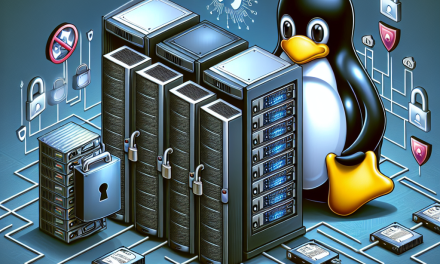In the modern digital age, where cyber threats loom large, compliance with industry standards and regulations is not just a necessity but a fundamental component of sound IT governance. For organizations relying on Linux server infrastructures, regular scanning emerges as a vital practice to enhance security and ensure compliance.
Understanding Compliance in the Linux Server Context
Compliance refers to adhering to specific laws, regulations, and standards applicable to your business and the data you manage. Standards such as GDPR, HIPAA, PCI DSS, and SOC 2 have straightforward requirements around data protection, security controls, and auditing procedures. For organizations leveraging Linux servers, ensuring compliance reduces liability and fortifies trust among stakeholders, clients, and customers.
The Role of Regular Scanning in Compliance
1. Vulnerability Management
Linux servers, being open-source, are not immune to vulnerabilities. Regular scanning helps in identifying potential security flaws within the system, applications, and networks. Tools such as OpenVAS, Nessus, or Lynis can provide insights into known vulnerabilities associated with installed software packages and system configurations. By addressing these vulnerabilities promptly, organizations can avoid exploitation by malicious entities, ensuring better data protection.
2. Configuration Management
Misconfigurations in Linux servers are a common cause of compliance issues. Regular scans can help in assessing the configuration settings against established benchmarks, such as the Center for Internet Security (CIS) benchmarks. This process ensures that servers are not only compliant with best practices but also hardened against potential attacks. By regularly reviewing configurations, organizations can rectify deviations that might compromise security.
3. Audit Readiness
Compliance often requires the ability to demonstrate adherence to defined standards through documentation and reports. Regular scanning allows organizations to maintain a current inventory of their server infrastructure, including installed packages, services running, and security settings. This inventory proves invaluable during audits, as it offers a clear view of security postures and allows organizations to proactively address any gaps or discrepancies.
4. Data Integrity Assurance
For many compliance standards, maintaining data integrity is critical. Scanning regularly contributes to the assurance that the data stored on Linux servers is not exposed to unauthorized access or potential loss. By utilizing file integrity monitoring tools, organizations can detect unauthorized file changes and respond swiftly, thus safeguarding sensitive information.
Implementing an Effective Scanning Routine
To reap the benefits of regular scanning, organizations must implement a structured approach:
-
Define a Scanning Policy: Establish a clear policy outlining what should be scanned, how often scanning should occur, and which tools will be employed.
-
Select Appropriate Tools: Choose robust scanning tools tailored to your environment. Opt for tools that integrate seamlessly with your existing infrastructure and compliance requirements.
-
Schedule Regular Scans: Determine a schedule for routine scans based on your organization’s risk appetite. For most environments, a quarterly scan will suffice, but more sensitive environments may require monthly or even weekly assessments.
-
Review and Remediate Findings: After each scan, ensure findings are reviewed and prioritized. Prompt remediation of critical vulnerabilities is vital to maintaining compliance.
-
Document Everything: Keep detailed records of scans, vulnerabilities found, and actions taken for remediation. This documentation will be essential for demonstrating compliance during audits and assessments.
- Stay Updated: The landscape of threats is constantly changing. Ensure your scanning tools are updated to incorporate new vulnerability definitions and compliance requirements.
Conclusion
Compliance is an ongoing journey rather than a one-time destination, especially for organizations utilizing Linux servers. Implementing regular scanning practices is essential to identifying vulnerabilities, ensuring configuration correctness, and maintaining data integrity. By embracing a proactive scanning strategy, organizations not only bolster their security posture but also safeguard their reputation in a world where trust is paramount.
At WafaTech, we understand the challenges of managing Linux server infrastructures, and we’re committed to providing insights and solutions to help you navigate the complexities of compliance and security. Regular scanning is just one step in a broader strategy for achieving compliance, and we’re here to support you every step of the way.
By taking the initiative to ensure compliance through regular Linux server infrastructure scanning, organizations can confidently navigate their digital landscapes, empowering them to focus on growth, innovation, and customer satisfaction while safeguarding their assets and reputation.





